Q
What's The Monthly Installment of Proton S70? See Here!
The monthly installments for the Proton S70 vary based on the loan amount, loan tenure (usually between 5 to 9 years), bank interest rate, and down payment ratio. Take the Proton S70 1.5T Premium for example. Its official price is around RM 94,800 (excluding insurance and road tax). If you choose a 10% down payment (around RM 9,480), take a loan of RM 85,320, with a 5 - year tenure (60 months) and a bank interest rate of about 2.8%, the monthly installment will be approximately between RM 1,550 and RM 1,650. If you opt for a 9 - year loan (108 months), the monthly payment can drop to RM 950 - RM 1,050, but the total interest will be higher. Interest rates may vary slightly among different banks such as Maybank, Public Bank, and RHB. It is recommended to calculate the precise installment plan through the official Proton website or authorized dealers. Additionally, Proton sometimes offers promotions with low down payments (0% or 5%) or low - interest packages, which can further reduce the monthly payment burden. Before buying a car, it's advisable to compare offers from different sources and ensure that the repayment amount does not exceed one - third of your monthly salary to maintain a healthy financial plan.
Special Disclaimer: This content is published by users and does not represent the views or position of PCauto.
Related Q&A
Q
Is the Proton S70 fuel consumption?
As the latest four - door sedan launched by the Proton brand, the Proton S70's fuel economy performance meets the mainstream level of Class B sedans. The official combined fuel consumption data is 6.0 - 6.4 liters per 100 kilometers (the specific figure varies depending on the driving mode and road conditions). This result is quite reasonable for the power combination of a 1.5 - liter turbocharged engine and a 7 - speed dual - clutch transmission.
The actual fuel consumption is affected by driving habits. For example, it may rise to 7.5 - 8.0 liters in congested urban areas in Kuala Lumpur, while it can drop to around 5.5 liters during high - speed cruising. It is recommended that car owners optimize fuel consumption through regular maintenance (especially replacing the air filter and spark plugs), maintaining a reasonable tire pressure (210 - 230 kPa), and avoiding rapid acceleration.
It's worth noting that the fuel consumption data of competing models in the same class, such as the Honda City and Toyota Vios, also fall within a similar range. This reflects that the current small - displacement turbocharging technology has become the mainstream solution for balancing power and fuel consumption. For users who often drive long - distance, the S70's 40 - liter fuel tank, combined with this fuel - consumption level, can provide a cruising range of approximately 600 kilometers, which can fully meet the inter - city commuting needs on the Malay Peninsula.
Q
Does the Proton S70 have a sunroof?
The current model configurations of the Proton S70 do not come with a sunroof. This car focuses more on performance in terms of power, intelligent technology, and practicality. For example, it is equipped with a 1.5T turbocharged engine and a wide range of driving assistance systems. For Malaysian consumers, while a sunroof can enhance interior lighting and create a more open - feeling cabin, it may also increase the interior temperature in the tropical climate. That's why many local models prioritize optimizing air - conditioning efficiency and heat insulation performance.
If you particularly value the sunroof configuration, you can consider some high - end versions of other models in the same class, such as the Honda City or the Toyota Corolla Altis. However, you need to be aware of the maintenance costs of the sunroof and the potential rattling issues that may occur over long - term use.
The Proton S70 is more positioned towards family practicality and cost - effectiveness. Its standard - equipped LED headlights, digital dashboard, and Advanced Safety Assist system can already meet the daily needs of most users. It is recommended that you weigh the priority of configurations based on your actual usage scenarios.
Q
How heavy is the Proton S70?
The weight of the Proton S70 is approximately between 1,300 and 1,400 kilograms, specifically depending on the vehicle configuration and powertrain. As a four - door sedan under Proton, this car adopts a lightweight design and an efficient powertrain, ensuring good fuel economy and driving performance. For Malaysian consumers, the Proton S70 has a moderate weight. It not only guarantees stability during high - speed driving but also doesn't significantly increase fuel consumption, making it highly suitable for daily commuting and long - distance driving.
Moreover, the vehicle weight also has a certain impact on the suspension system and braking performance. The Proton S70 has been carefully tuned in this regard, offering a comfortable driving and riding experience and reliable braking effects.
If you're interested in more details of the Proton S70, such as engine performance or safety features, you can further learn about its 1.5 - liter turbocharged engine and a wealth of advanced safety technologies, which are the highlights of this model.
Q
How many cylinders in the S70?
As a classic model from the late 1990s to the early 2000s, the Volvo S70's engine configurations vary depending on the market and version. The most common one is the inline 5-cylinder engine (that is, 5 cylinders), such as the 2.4-liter or 2.5-liter turbocharged versions. This engine is well - known for its smoothness and durability, which is suitable for Malaysia's diverse road conditions. For Malaysian users, the inline 5-cylinder layout strikes a balance between power output and fuel economy. Meanwhile, Volvo's engine technology also emphasizes safety and environmental protection standards, meeting the local people's trust in European cars. If you're considering a used S70, it's recommended to check the engine maintenance records because the number of cylinders directly affects the complexity of repairs and the supply of spare parts. Special attention should be paid to the maintenance of the cooling system and ignition coils in Malaysia's humid climate. In addition, modern Volvo models generally use 4-cylinder engines or hybrid power, but the 5-cylinder design of the S70 remains a unique symbol in the hearts of car enthusiasts. Its sound and power characteristics were quite distinctive among cars of the same class back then.
Q
Is the Proton S70 Heavier Than the X50?
The weight of the Proton S70 is approximately between 1,325 kg and 1,345 kg, depending on different versions. Meanwhile, the Proton X50 weighs between 1,300 kg and 1,330 kg. There isn't a significant difference in weight between the two, but as a three - box sedan, the S70's body structure focuses more on high - speed stability, so it's slightly heavier. In contrast, as a compact SUV, the X50's body design leans more towards flexibility and passability, and its weight distribution is also different.
In the Malaysian market, both models adopt Proton's latest technological platforms. The S70 is built on the BMA platform, while the X50 shares the platform with the Geely Binyue. Both cars have done well in lightweight design, ensuring body rigidity while also taking fuel economy into account.
For consumers, when making a choice, besides the weight, they can also consider space requirements, driving habits, and usage scenarios. For example, the S70 is more suitable for long - distance driving, while the X50 is better for urban commuting and occasional light off - road driving. Both cars demonstrate Proton's advantages in local production and tuning, and can well adapt to the road conditions and climate in Malaysia.
Q
How many seats does the Proton S70 have?
The Proton S70 is a five-seater sedan with a standard four-door, three-box design, offering Malaysian consumers a comfortable seating space and a practical family car experience. As the latest model under the Proton brand, the S70 focuses on ergonomics in its seat design. The front seats provide excellent support, while the rear seats balance legroom and seating comfort, making it suitable for long-distance travel or daily commuting. The trunk of this car also has a relatively large capacity, which can meet the storage needs of family trips.
The Proton S70 is equipped with a 1.5-liter turbocharged engine, delivering a well-balanced performance. Meanwhile, it comes with a rich array of technological features, such as an advanced infotainment system and driving assistance functions, further enhancing driving convenience and safety.
For Malaysian consumers, the Proton S70 is an outstanding choice in terms of cost-effectiveness, especially for family users who value practicality and comfort. Its localized design and manufacturing also ensure the convenience of after-sales service.
Q
How much torque does a Proton S70 have?
As the latest sedan model of the Proton brand, the Proton S70 is equipped with a 1.5-liter turbocharged four-cylinder engine. Its maximum torque output reaches 226 Nm and is continuously delivered within a wide speed range of 1,500 to 4,000 rpm. This tuning is particularly suitable for the common scenarios of urban congestion and highway overtaking in Malaysia. This torque data stands out among 1.5T models in the same class. Paired with a simulated 7-speed CVT transmission, it can balance smoothness and fuel economy.
It's worth noting that the low-speed and high-torque characteristics of the turbocharged engine give the S70 an edge when starting and climbing hills. The width of the torque peak platform also means that you don't need to downshift frequently to get sufficient power in daily driving. For Malaysian consumers, this kind of power configuration can not only meet the needs of family cars but also provide enough driving confidence during occasional long-distance trips. At the same time, it meets the local market's emphasis on fuel efficiency.
If you want to further understand the impact of torque on the driving experience, you can observe the vehicle's performance on mountain roads such as Genting Highlands. Ample torque can significantly reduce the power loss when climbing hills.
Q
Is the Proton S70 turbo?
Yes, the Proton S70 is equipped with a 1.5-liter turbocharged engine. This engine can deliver 150 horsepower and 226 Nm of torque. Paired with a 7-speed dual-clutch transmission, it offers decent power performance and fuel economy. As a four-door sedan under the brand, the Proton S70 inherits the technological and design advancements of Proton in recent years, especially in the powertrain. The application of turbocharging technology makes it more competitive among models in the same class. The advantage of the turbocharged engine lies in its ability to provide stronger torque at low speeds, which is suitable for the frequent stop-and-go traffic conditions in Malaysian cities. Meanwhile, it can also maintain good power reserve during high-speed driving. For consumers who focus on power performance, the turbocharged engine of the Proton S70 is a worthy option to consider. Moreover, Proton's local service network can also provide convenient after-sales support for car owners. If you're interested in turbocharging technology, you can also learn about its working principle and the precautions for daily maintenance to ensure the vehicle stays in good condition for a long time.
Q
Is the Proton S70 a hybrid?
The Proton S70 isn't a hybrid model. It's a traditional four-door sedan powered by fuel. It's equipped with a 1.5-liter turbocharged gasoline engine and paired with a CVT transmission. It belongs to the new sedan models under the Proton brand. At present, Proton's hybrid technology is mainly applied to SUV models like the X90, which uses a 48V mild-hybrid electric vehicle (MHEV) system. As a sedan focusing on economy, practicality and sporty design, the S70 still relies on fuel power.
For Malaysian consumers, if they're considering fuel-saving and eco-friendly options, they can keep an eye on Proton's potential new-energy models in the future, such as the rumored all-electric Persona or Iriz. However, at this stage, the S70 is more suitable for users who pursue power performance and cost-effectiveness.
Hybrid technology is gradually becoming popular in the Malaysian market. Japanese models like the Toyota Corolla Cross Hybrid or the Honda City RS e:HEV also offer more choices. Nevertheless, the advantage of the Proton S70 lies in the high cost-effectiveness of parts and the convenience of after-sales service of this local brand. It's suitable for family users with limited budgets who need large space and rich configurations.
Q
What is the horsepower of Proton S70?
The Proton S70 is equipped with a 1.5-liter turbocharged four-cylinder engine, which delivers a maximum horsepower of 150 and a peak torque of 226 Nm. It's paired with a 7-speed dual-clutch transmission, and its power performance is more than enough to meet the needs of daily driving and highway cruising. This engine adopts direct injection technology, which not only improves fuel efficiency but also optimizes power output. It's well-suited to Malaysia's diverse driving environments and can handle both city commuting and long-distance trips.
As an important model under the brand, the Proton S70 showcases Proton's technical expertise in powertrain systems. Moreover, its suspension setup strikes a good balance between comfort and handling, making it suitable for local road conditions.
For readers who want to learn more about automotive knowledge, they can focus on the advantages of turbocharging technology. For instance, it can provide ample torque at low engine speeds, making it easier for the vehicle to start and overtake. Meanwhile, the dual-clutch transmission enables quick gear changes, enhancing driving pleasure and fuel economy.
These features of the Proton S70 make it a highly competitive option in its class, especially for Malaysian consumers who value cost-effectiveness and practicality.
Latest Q&A
Q
How much does a 2022 Honda Civic battery cost?
The battery price for the 2022 Honda Civic in Malaysia ranges from approximately RM300 to RM600, depending on the model and battery brand. Original equipment (OEM) batteries usually cost a bit more, while third-party brands like Panasonic, Amaron, or Bosch might offer more budget-friendly options. The specific price is also influenced by battery capacity (such as specifications like 40B20L or 55D23L) and the warranty period. It's advisable for car owners to choose a battery that matches the original specifications when replacing it to ensure compatibility with the vehicle's electronic system. Additionally, consulting local authorized dealers or reputable auto repair shops is a good idea, as they often provide free installation and testing services. Furthermore, regularly checking the battery's health (such as voltage and electrolyte levels) and avoiding prolonged vehicle inactivity can help extend its lifespan. If you experience difficulty starting the car or notice dim headlights, these could be signs of a aging battery, and it should be replaced promptly to avoid the hassle of breaking down on the road.
Q
How many miles does a 2022 Civic last?
With proper maintenance and regular use, the 2022 Honda Civic typically has a lifespan of between 200,000 to 300,000 miles (approximately 320,000 to 480,000 kilometers). Of course, its actual lifespan depends on things like your driving style; how often you service it; and the road conditions you encounter. The Civic is well - known for its reliability and durability—even here in Malaysia's tropical climate. Stick to regular oil changes, inspect the cooling system regularly, and maintain proper tire pressure, and you’ll further extend its lifespan.
Malaysia’s roads can be varied too—congested city traffic and long highway stretches both cause different levels of wear and tear. That’s why I’d recommend servicing every 6 months or 5,000 to 10,000 kilometers. It’s the best way to keep critical parts like the engine and gearbox in top shape. If you’re really aiming to keep your Civic running for the long haul, choose high - quality engine oil and genuine parts. They might seem like small details, but trust me, they play a crucial role in maintaining the car's long - term performance.
All in all, the 2022 Honda Civic is a durable pick for the Malaysian market. With proper and regular maintenance, it can ensure years of reliable driving.
Q
Does the 2022 Honda Civic have any recalls?
As of 2022, there were indeed some recall records for the 2022 Honda Civic in the Malaysian market. The main issue was with the Airbag Control Unit (ACU) software, which could potentially prevent the airbags or seatbelt pretensioners from deploying properly in a collision. Honda Malaysia has notified affected owners through official channels to arrange for a free software update. Additionally, certain models might experience engine stalling due to a manufacturing defect in the fuel pump module, and Honda has proactively recalled these vehicles to replace the relevant components.
For Malaysian owners, it's advisable to check the specific recall status of your vehicle by entering the Vehicle Identification Number (VIN) on Honda's official website or by directly contacting an authorized service center to confirm. Recalls are a normal part of a car manufacturer's commitment to product responsibility, and Honda's prompt response demonstrates its dedication to safety.
Malaysian owners who notice any abnormalities with their vehicles, such as dashboard warning lights illuminating or a loss of power while driving, should contact after-sales service promptly. You can also proactively ask technicians about the latest recall information during regular maintenance to ensure your car is in optimal condition.
Q
How to pre-start a Honda Civic 2022?
To pre - start your 2022 Honda Civic, first make sure the key is within range—usually 1 - 2 meters. Press the unlock button to wake up the system; then quickly press the "Engine Start" button twice without stepping on the brake. This puts the car into "ACC mode," where the dashboard lights up partially but the engine stays off—perfect for operating the radio or the windows. If you need full power for a system check, just press the start button once more (still no brake) to switch to "ON mode."
Malaysia’s heat is no joke, so pro tip: when pre - starting, hold the unlock button for 3 seconds to turn on the air conditioning to ventilate the cabin. But avoid doing it frequently—frequent pre - starts can drain the battery. If the car’s been sitting a while, it's better to start the engine normally to let the battery recharge.
A note on the engine: The 2022 Civic’s 1.5T Earth Dreams engine uses direct injection. Unlike old carburetor cars, there's no need for the traditional "warm - up" process—the ECU adjusts fuel delivery automatically on cold starts. Just avoid idling for more than 3 minutes, or you may receive an environmental protection warning (thanks to JPJ’s idle emission rules here).
Rainy season? Pre - start becomes your best friend for pre - checking TPMS and wiper condition. However, note that Honda Sensing features only activate once the engine’s properly running.
Q
What kind of battery is in the Honda Civic 2022?
The 2022 Honda Civic in the Malaysian market comes equipped with a 12V maintenance-free lead-acid battery, typically either the wet-flooded type or AGM (Absorbent Glass Mat) variant. Specific specifications can vary depending on the trim level—for instance, the 1.5L turbocharged models might feature higher-performance batteries to support the start-stop system. These batteries boast strong vibration resistance and low self-discharge rates, making them well-suited for tropical climates. It's advisable to regularly check the terminal cleanliness and electrolyte levels (for wet batteries) to maximize lifespan.
For Malaysian drivers, the hot climate can accelerate battery degradation, so avoiding prolonged use of in-car electronics with the engine off and scheduling professional battery checks every 2-3 years are crucial. When replacement is needed, Honda recommends batteries meeting JIS or DIN standards, such as the 55B24L model (for certain variants). Reputable third-party options like Panasonic or Bosch with matching specifications are also viable, though compatibility should be verified.
Additionally, modern automotive electronics demand stable voltage supply—substandard batteries may trigger false sensor readings. For peace of mind and to preserve warranty coverage, having replacements done through authorized service centers is recommended.
View MoreRelated News

The fifth-generation Geely Emgrand car photos released, with upgrades in body size and power system
WilliamSep 16, 2025
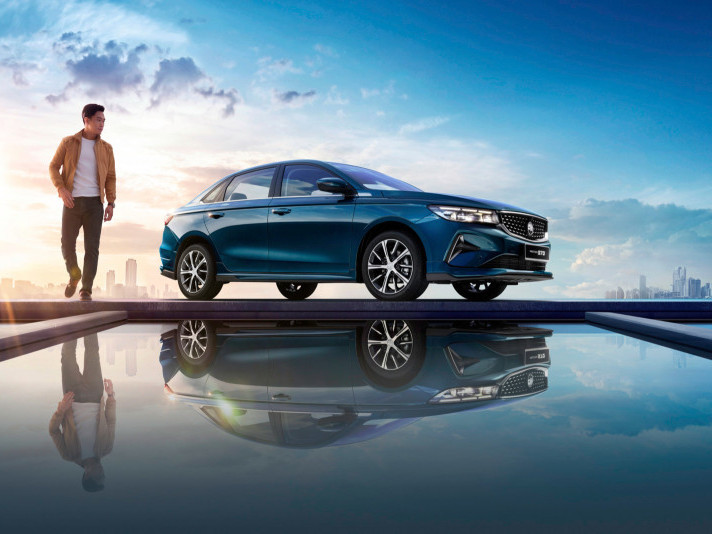
Proton S70 Interior Revealed: More Advanced Technology Features
MichaelJul 2, 2025
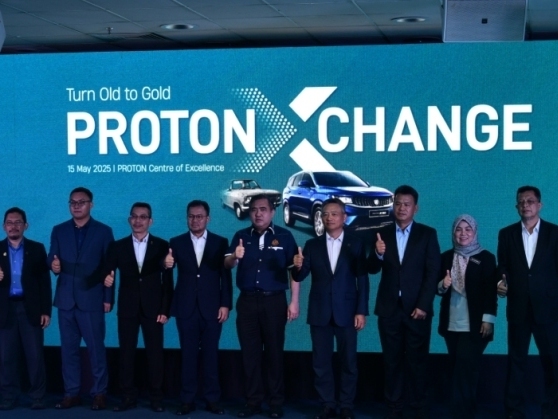
Proton Xchange: Get RM2000 Extra for Your Old Vehicle!
JamesMay 21, 2025
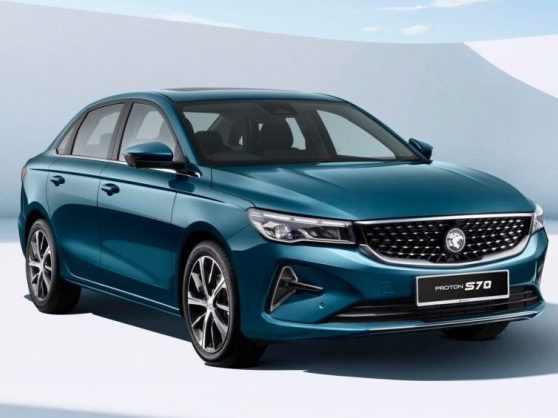
Proton S70 Price Revealed: Complete Buying Guide for Your Best Deal
RobertApr 9, 2025

Proton S70 sales not meeting expectations? But its prototype sells tens of thousands of units every month in China
JamesDec 25, 2024
View More










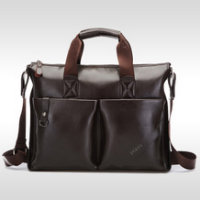
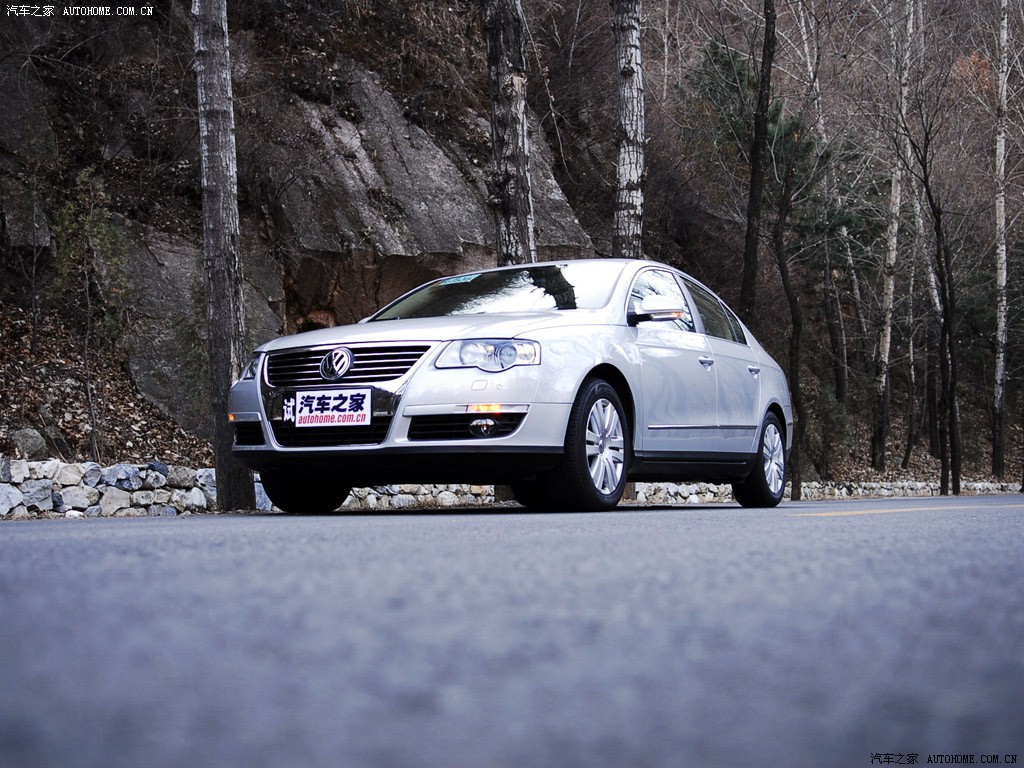
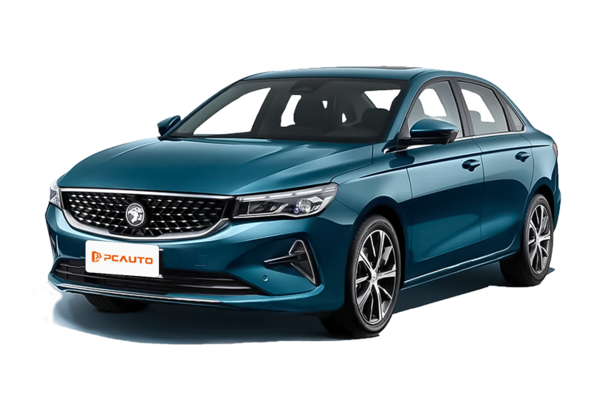




Pros
Cons